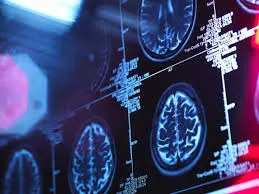An international team of researchers from New York University recently discovered how pain is signaled from within Schwann cells and found several ways to block this signaling, providing potential targets for new migraine treatments.
The findings of the research were published in the journal, ‘Nature Communications’. Schwann cells, which are abundant in the peripheral nervous system and create a protective sheath around nerve fibers play an essential role in migraine pain.
Migraines affect more than 15 percent of adults, with women twice as likely as men to experience these intense headaches. Calcitonin gene-related peptide (CGRP), a small protein in the nervous system, is known to play an important role in migraine pain; in fact, a new class of drugs to prevent migraines use injections of monoclonal antibodies to target CGRP or its receptor.
“While CGRP has been implicated in migraine pain, how it causes pain has been an area of controversy in the scientific community,” said Nigel Bunnett, Ph.D., professor, and chair of the Department of Molecular Pathobiology at NYU College of Dentistry. Bunnett led the study with Pierangelo Geppetti, MD, professor of clinical pharmacology at the University of Florence and director of the Headache Center of Careggi University Hospital.
“The success of CGRP monoclonal antibodies for migraine and the poor ability of antibodies to penetrate the blood-brain barrier suggests that CGRP causes pain in the periphery rather than within the brain,” added Bunnett, a researcher at the NYU Pain Research Center.
To explore the cellular mechanism of CGRP-evoked pain, Bunnett and his colleagues focused on Schwann cells, which are found outside the brain in the peripheral nervous system. The researchers studied mice in which the CGRP receptor, called CLR/RAMP1, was disabled in Schwann cells. They modified the CGRP receptor by deleting RAMP1, one of two important components of the receptor, from Schwann cells in the facial area of mice.
In normal mice, administering CGRP made the facial region very sensitive, a proxy for migraine pain. However, in mice lacking the CGRP receptor in Schwann cells, CGRP did not cause pain. In a second experiment, the researchers administered capsaicin a chemical found in spicy chili peppers.
Capsaicin activates an ion channel called TRPV1, which releases CGRP and usually causes pain. Again, capsaicin did not cause migraine-like pain in mice lacking the CGRP receptor in Schwann cells, providing further support for the idea that the CGRP receptor in Schwann cells plays a critical role in migraine pain.
Using human Schwann cells, the researchers then discovered what occurs within these cells to signal pain. They found that when CGRP binds to its receptor on a Schwann cell, the receptor moves into a compartment inside the cell called an endosome.























